Despite being a follow up to 2018’s Octopath Traveler, Octopath Traveler II is an entirely standalone experience. The new title features a brand new setting, eight new stories, and eight new travelers to experience those stories with. A lot of the bones are the same here – the eight new party members have the same eight jobs that the party from the original did, and, in a fun continuation of what could now be considered tradition, the first letters of their names even spell out OCTOPATH, just like the first game’s party. I’ll quickly run through each new party member now, since I’ll be talking about them quite a bit as I dive into this review, and you’ll probably want to know who’s who:
When all is said and done, it’d be easy to look at a lot of the basic similarities between the two games and say that Octopath Traveler II is more of the same, but what really makes Octopath Traveler II stand out from its predecessor is all of the small things that are different, and, I’d argue, better.
Eight Stories, One World
Octopath Traveler II carries on the unique, titular mechanic set forth by its predecessor. Your party consists of eight separate characters experiencing eight separate stories within a brand new world, a continent called Solistia, divided down the middle by a great sea. On paper, the eight-characters-eight-stories gimmick is honestly a brilliant way to set the series apart from other turn-based RPGs. You’ve got eight stories of varying scale to experience, giving each character in the party a chance to shine in their own right, rather than risking some characters getting lost in the shuffle of a grander epic that other RPGs are wont to tell. In practice, however, it’s tough to satisfyingly execute. Octopath Traveler II definitely improves on the aspects of this system that the original struggled with, though I’d say that the improvements could be, well, improved.
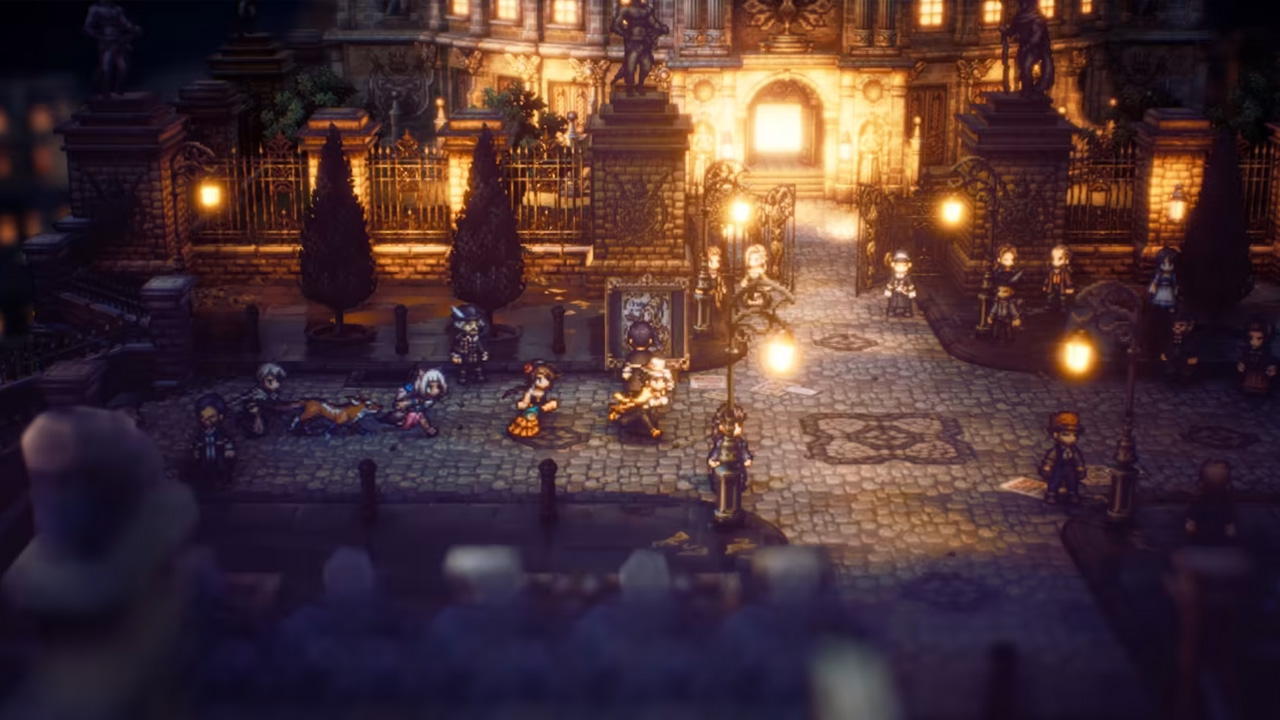
Each story is still, by and large, self contained. You won’t see Ochette jumping in to help Cassti regain her memories any more than you’ll see Hikari or Partitio jump and help Agnea achieve her dream of being a star dancer. In fact, much like the first game, the cutscenes in these stories treat each character as if they’re acting alone, which is fine, for the most part. My biggest issue with this is when a line explicitly contradicts the fact that I have eight party members – like when a group of thieves is threatening Throné and remarks that she’s outnumbered three-to-one – it takes me out of the narrative just a bit. Thankfully, glaring callouts like that one aren’t plentiful, though I did often find myself noticing other moments where another party member would have been helpful in a particular situation or would have otherwise fit pretty easily into a scene.
It’s not like the entirety of the game spends its time pretending the eight characters aren’t accompanying one another, as there are small things that really help flesh out the fact that these characters are traveling together. There are nice little touches in-battle, like voiced lines complimenting each other by name on their battle prowess or worrying about each other when they get to low health, that helps sell these characters as a team. In addition, there is plenty of Travel Banter outside of battle, where characters will remark on what is happening in each other’s stories, which you can trigger with a click of the + button when prompted. One of my favorite parts about the Travel Banter is that if you miss an opportunity to view any of it in-context, you can also view any that you’ve seen or missed from the journal in the pause menu.
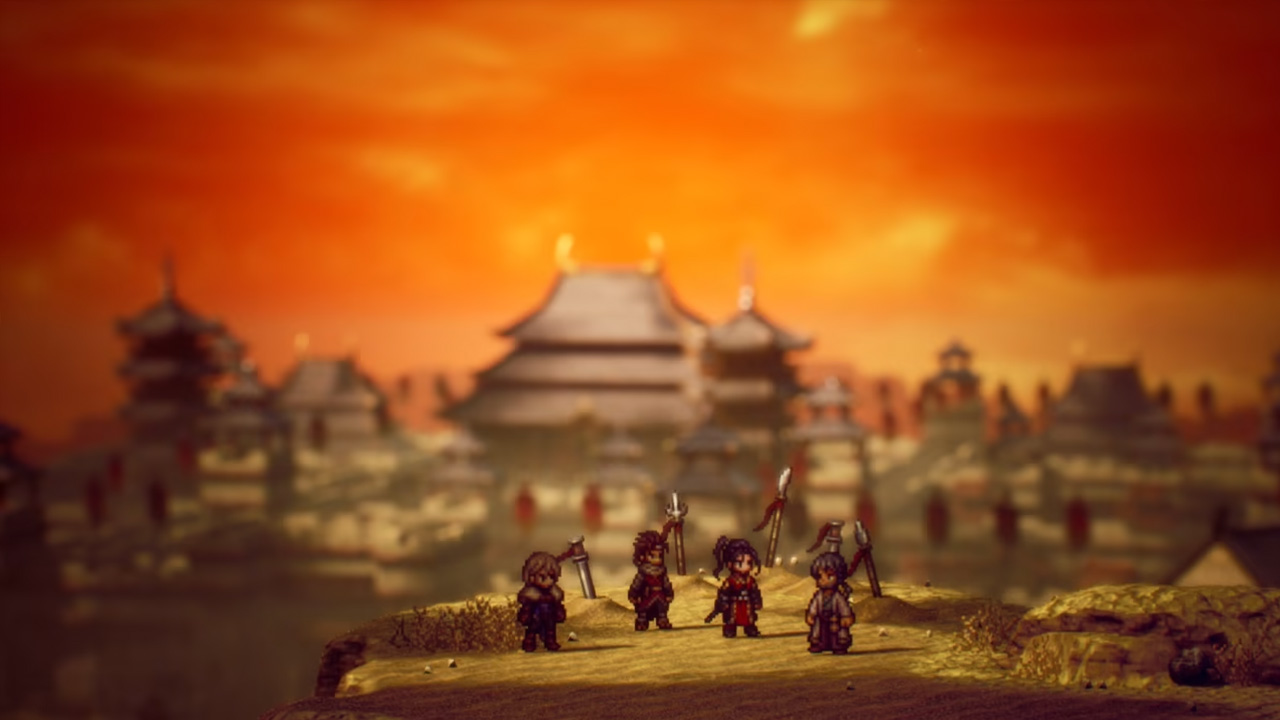
Another nice addition that makes all these characters really feel like companions are Crossed Paths, short story chapters featuring two party members each that are brand new to Octopath Traveler II. The Crossed Paths don’t exactly have much to do with each involved character’s ongoing story, but they do help flesh out the relationships between pairs of characters. Unfortunately, each character only has Crossed Paths with one other character – the game pairs Hikari with Agnea, Throné with Temenos, Partitio with Osvald, and Ochette with Cassti. These are all pairings that make a lot of sense and are entertaining, not to mention well thought out, but I would have liked each character to have a couple more Crossed Paths with other party members to flesh out their dynamics some more.
Individually, each character’s chapters cover a wide scope of scenarios and emotional beats. Larger scale adventures like Hikari fighting to reclaim his homeland from his brother in the name of peace or Temenos investigating an assassination plot involving the head of the church followed by the entire continent sit right alongside more personal stories like Cassti trying to regain her lost memories or Agnea setting out from her small town to become a world-renowned star. Some stories clicked with me more than others, but each of the characters was extremely endearing and I genuinely wanted each of them to succeed at what they were trying to accomplish.
The varying scopes don’t stop at the story content either, the actual mechanics of each chapter varied wildly between each other, providing a breath of fresh air when moving between stories as I recruited more party members and leveled up my team. Some chapters were pretty straightforward, you’d use one or both of the character’s Path Actions, then move along to a dungeon, and then fight a boss. Other chapters were more complex or entirely different, like investigating various locations around a town for clues and recreating the scene of a crime or planning and executing a prison escape. Several chapters were even split into multiple parts with different suggested level requirements across different towns, requiring you to complete them gradually in between other character’s chapters.
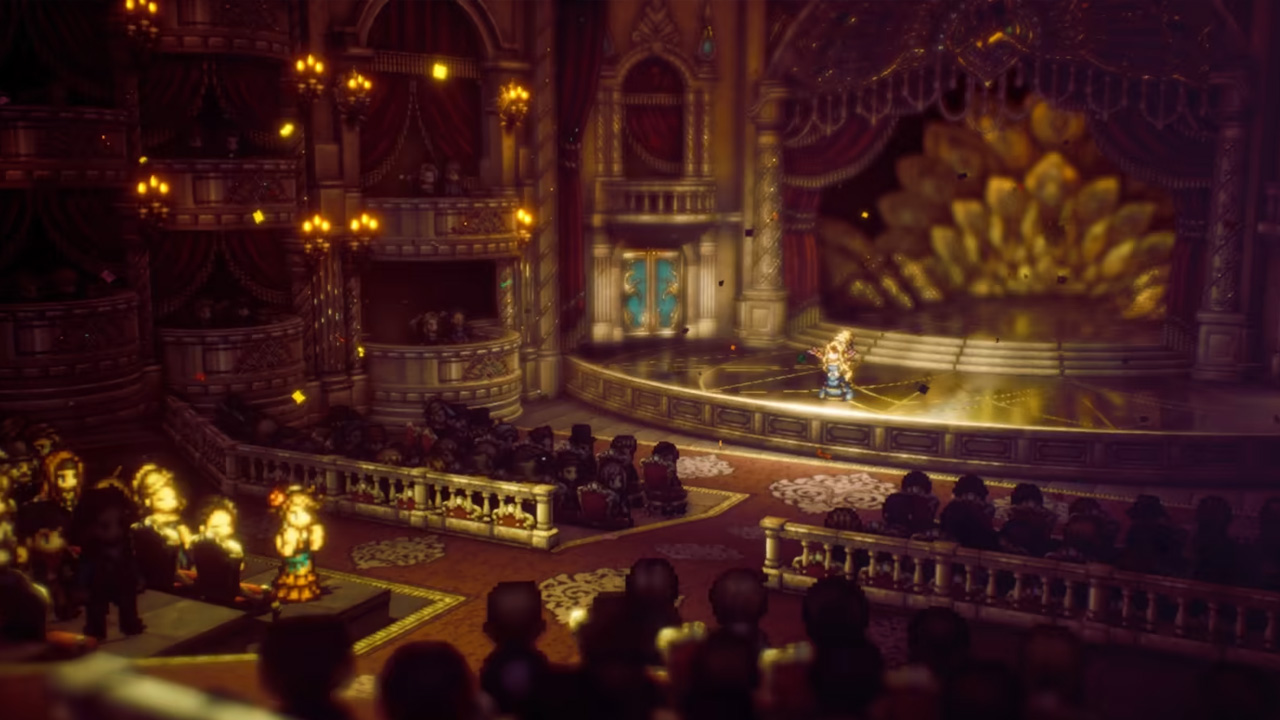
To be quite honest, the variety was overwhelming at first. As I recruited more characters and continued to complete their chapters, it felt like every town I had access to had one or more things to do, and I wasn’t sure where to start or where to go next. Early on I even found myself so enamored with the characters I had already recruited and the way they played that I was asking myself if I even really wanted to recruit the others at that point. Obviously a huge draw of the game was the eight different characters and their stories, so I did recruit them all – recruiting my last one at hour 20 in my playthrough – but it took me a while to get used to having more than just my first four party members at my disposal.
As things got rolling, however, I found myself loving each and every party member, because of both their characterizations and their in-battle mechanics, and was excitedly planning out routes across the map and figuring out team compositions that made the most sense, taking into account where I’d be going next and what levels my characters were at. In the end, my only issue with having so many characters to use was the fact that I could only change my actual party composition or look at the equipment that all eight of my party members had at a tavern, rather than doing it on the fly. Out in the world, all you can do is change the order of your four active members and change the equipment of those four, which feels just a little clunky in a game that sells itself on having eight party members total.
Playing The Game
Gameplay-wise, not a lot has changed here from the first Octopath Traveler, but there are a lot of smaller things throughout that are enhanced a bit. Each character in your party has access to two Path Actions, which allow them to interact with the people around the world in different ways and accomplish different things. These path actions also seem to inhabit a sort of scale of morality – though this isn’t explicitly mentioned in-game and doesn’t exactly affect much about your playthrough. For example, if you wanted to get some items from the townspeople you meet, Partitio can buy their items from them, while Agnea can use her Entreat action to charmingly convince them to just give her their items for free. On the other end of the scale, Throné can outright steal the same items from townspeople, while Osvald gets a little violent and can actually mug townspeople in order to take their items. The two path actions each character has are separated by the new day and night cycle, with one of their actions being available during the day, and the other action available at night. It’s also incredibly easy to swap between the two, as hitting ZR will swap the time of day from day to night with no consequences, letting you use either of each character’s Path Actions whenever you want. Altogether this makes for a pretty versatile system of actions between each of the characters, and lets you use almost any combination of characters you’d like to accomplish various tasks.
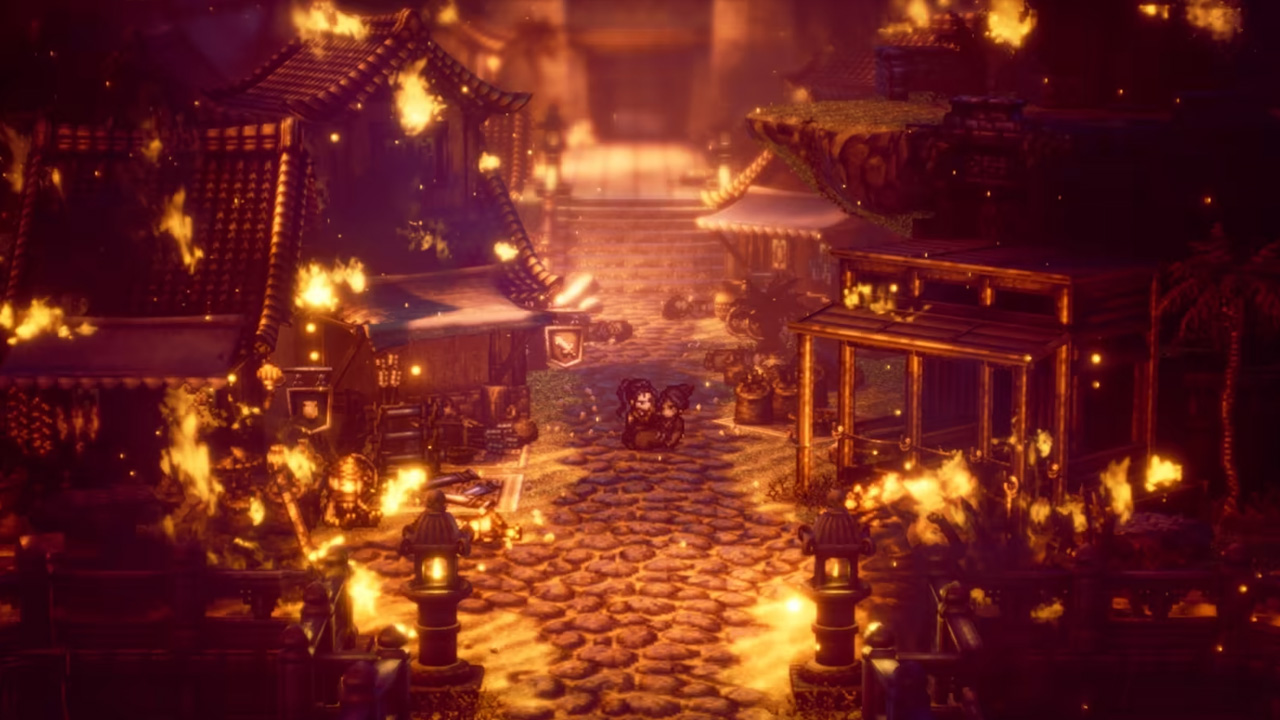
Speaking of various tasks, Octopath Traveler II is full to the brim with side quests, which you’ll need to use the aforementioned Path Actions to complete. The side quests here are extremely well done, though I’ll admit that it probably comes down to personal preference. Each side quest that you get usually starts out as a vague statement or request from a townsperson, and that’s about all the info you’ll get on how to complete it. To get to the bottom of most of the side quests in Octopath Traveler II, you really need to pay attention to the world around you, usually by utilizing the Path Actions of your party members. Every interactable character in the game has a short description that you can access using Path Actions like Hikari’s Bribe or Cassti’s Inquire. Reading these descriptions will sometimes provide you with helpful information or a clue as to what another character is talking about or asking for (As a side-note, I recommend reading every character’s description, because it’s very clear that a lot of love went into writing these descriptions and some of them are downright hilarious). Other times you’ll want to pay attention to an item a character has that you can get from them.
As a somewhat simple and straightforward example, I came across a woman who was struggling to remove an old sword from a large stone, and all I had to go on was that she knew that miners use a kind of sharp tool to break rocks. This clue sent me all the way to the other side of the world to the mining town of Oresrush, where I searched through every inhabitant’s belongings until I found a retired miner with a pickaxe I could buy, entreat, steal, or mug from him (I stole it, because it is fun to be a little naughty), which I then took back to the woman, who promptly used it to free the sword from the stone, completing the quest. I really, really enjoyed this side quest, and plenty of others like it, because my favorite type of side quest is one I have to do a little work for without a whole lot to go off of, and Octopath Traveler II delivered in droves.
I’ve loved every aspect of the game I’ve written about so far, but one of the things that really shines the brightest about Octopath Traveler II is the combat. The battle system, returning from the original Octopath Traveler, revolves largely around the Break and Boost system. Enemies have varying numbers of shield points, indicated by a number in a shield next to a list of their weaknesses. Bringing this number to zero by hitting their weaknesses will Break the enemy, preventing them from acting during both the turn they are broken and the following turn. The other part of this system, Boosts, takes place on the player’s side. Each character has up to five Boost charges, starting at one on the first turn and building up by one additional charge each turn. You can choose to use up to three of these charges in order to boost your attacks, either making basic attacks hit for one additional time per boost – up to 4x total – or making your skills stronger, meaning attack skills will hit harder and buffing/debuffing skills will have their effects last longer.
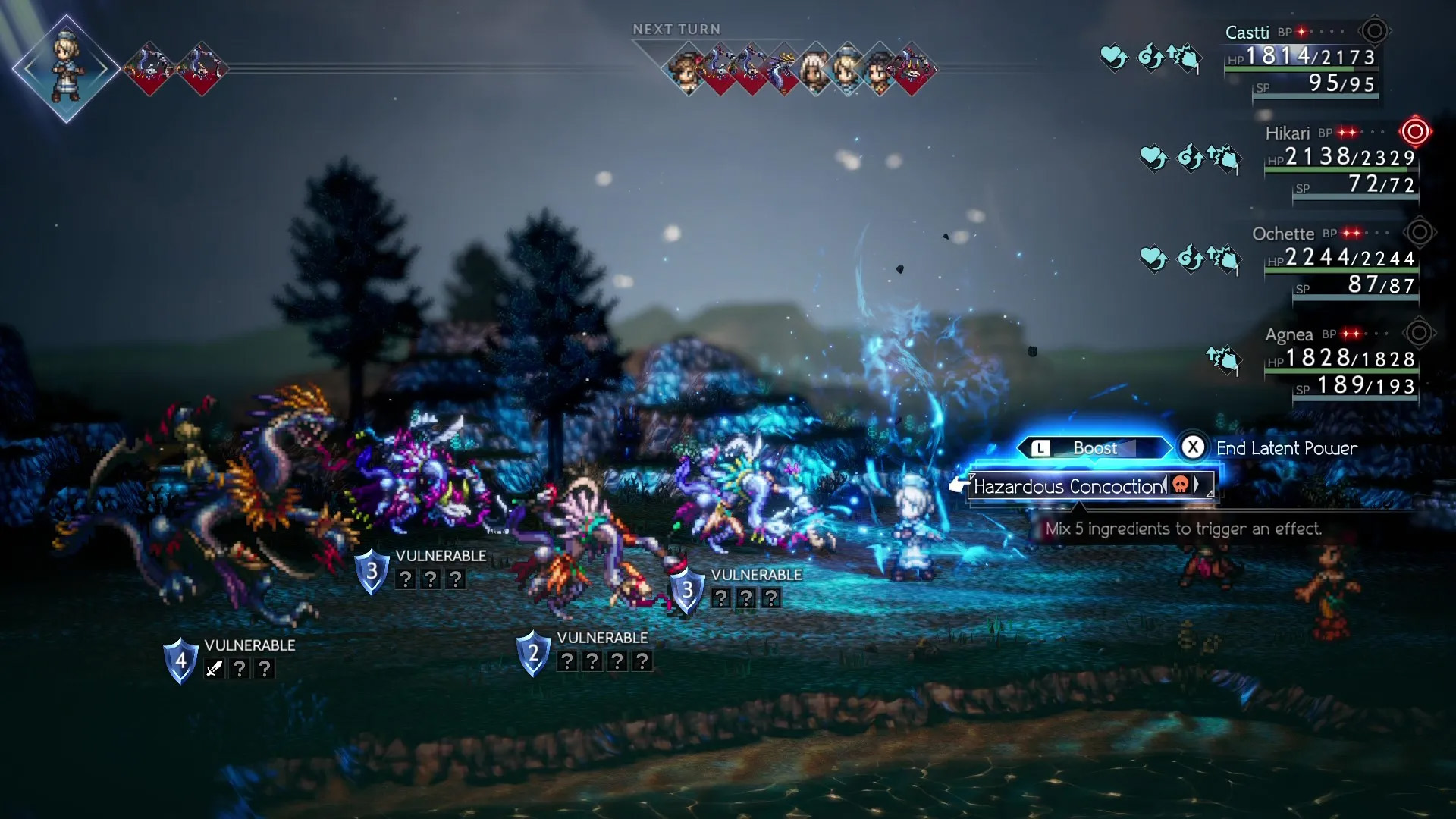
The trick to the Break and Boost system is knowing when to use your Boosts most effectively. Do you want to use them for multihits on an opponent’s weakness in order to break them faster? Or do you want to break your opponent first and then unleash some extra firepower with your Boosts while your opponent is in a weakened state? Figuring out a good flow with the combat system was essential to my enjoyment of Octopath Traveler II, as it turned even the most run-of-the-mill random encounters into satisfying displays of my team’s power. Figuring out enemy weaknesses and then strategizing how to set up my turns in order to keep enemies broken was one of the most rewarding parts of the game, even more so during boss fights.
Boss fights in Octopath Traveler II were already impressively weighty thanks to the depth of the combat system, but with plenty of different mechanics and unique moves that plenty of the bosses had, they often ended up feeling like I was solving a puzzle in order to succeed, which is right up my alley. Needing to take a few tries at the same fight can be frustrating in other games, but in my time with Octopath Traveler II I found myself excited when I realized where I’d gone wrong and then set out again to try something new. This really clicked for me in one of Agnea’s early boss fights, which kicked my butt more than once. Even though I was able to get a good pattern of Boosts and Breaks down, I just didn’t have the manpower to finish the job before getting overpowered. I was able to pinpoint that if I could just get some sort of head start in the fight, then I could easily break the boss and keep him broken long enough to turn the tide of the battle. From that point all it took was remembering that Throné has a passive ability that provides a few different buffs to my team at the beginning of a fight, and Temenos has a passive ability that debuffs the enemy team in the same manner, and that both of these abilities only take effect if the fight is happening at night. Since Throné and Temenos were already in my team all I had to do was hit ZR before the fight to switch the time from day to night, and I had all the edge I needed to wipe the floor with the boss on my next attempt.
A Stunning Display
There have now been a few different games published by Square Enix that feature the now-iconic HD-2D style introduced in the first Octopath Traveler, and frankly, they have all looked gorgeous. Octopath Traveler II kicks it up a few notches in the visual department and looks absolutely stunning in every respect. More dynamic camera angles and more detailed sprites make for a very visually appealing game, and it’s put to good use throughout. Cities, towns, and landscapes are all lively, colorful, and crisp, and I was taken aback by a lot of the detail and depth in the bigger cities especially. In-combat visuals are a treat as well, with so many of the attacks, skills, and spells looking flashy enough to impress but also weighty enough that they don’t lose any substance. The sprite work is clear and expressive as well, with each character feeling very visually distinct from one another, both in their appearance and their movements.
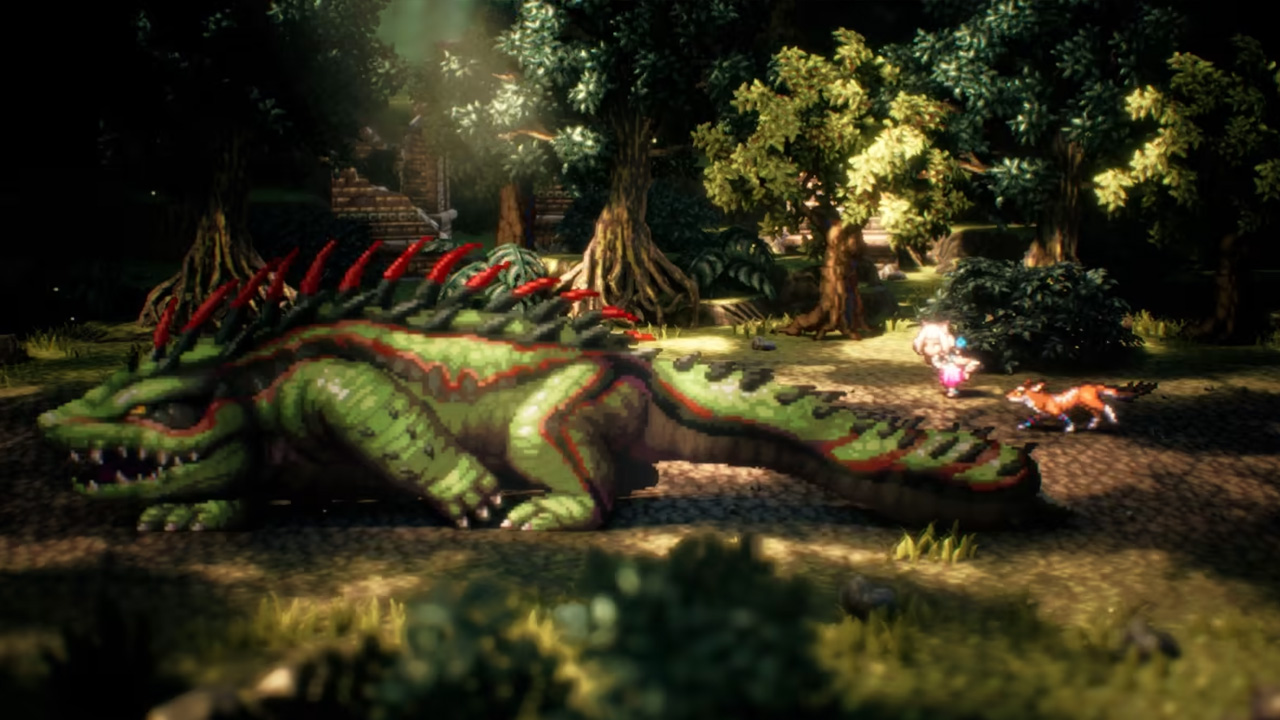
The map design of the overworld and dungeons is also impressive and expansive without feeling too empty or hand-holdy. Exploring to find little nooks and crannies where treasure is hidden often feels like it’s worth your time, because even if you do have to work for it a little bit, it never takes so long that it’s frustrating. Exploration also frequently pays off in a big way when you find a particularly powerful weapon, piece of armor, or accessory, which only adds to the satisfaction when you figure out how to make your way to a chest that you’ve spotted in the background or foreground. Treasure aside, none of the dungeons themselves feel too long or outstay their welcome either, even when you do spend time investigating every little nook and cranny to get your hands on all the treasure you can find.
The Sounds of Solistia
I won’t mince words here, the Octopath Traveler II soundtrack has quickly risen to a high spot on my “favorite video game OSTs of all time” list. Every single track feels purposeful and fits the situation or locale it’s played in to a T, and I could not be more appreciative of the effort that went into it. Yasunori Nishiki, Octopath Traveler II’s composer, has outdone himself with this soundtrack, and I know I will have it in heavy rotation on Spotify as soon as it hits the service (please Square Enix, give it to me soon). I will happily scream from the rooftops that Partitio’s theme, Partitio, The Merchant, is one of the most fire character themes of all time (Seriously, check it out if you can. It starts strong, and then that saxophone blares in and somehow gets even more impressive), but there are several other tracks that are absolute standouts, which include At Your Back, Hope, the boss theme Critical Clash 2, and Flamechurch’s nighttime theme. Honestly you can’t go wrong with any of the nighttime themes, they all feature some incredibly soothing vocal harmonies that I would gladly fall asleep to for the rest of my life.
Switch Performance
Octopath Traveler II on Switch won’t be outperforming any other of the available platforms, but it also doesn’t really have any bad performance to speak of. Load times are quick, whether you’re headed in and out of cutscenes, starting a battle, or fast traveling to another part of the world. The resolution is fine, not too blurry, and the framerate was steady and stable at 30 fps the entire time I played. I’m sure the visuals will pop a little more on more powerful platforms, but the portability of the Switch can’t be taken lightly, especially when it comes to RPGs. I have absolutely no complaints here, the game runs beautifully, and looks fantastic.
A Worthy Successor
With eight stories that are still largely standalone, despite more of an effort made to link the eight characters together as a cohesive group, I feel there are still some small improvements to be made. If a theoretical Octopath Traveler III can keep the stories feeling separate and independent while adding at least some indication that the travelers are, in fact, part of a group during story cutscenes, then it will be unstoppable. Even with that small gripe, we’re three months into 2023 and Octopath Traveler II is high on my list of Game of the Year candidates. It impressed me at nearly every turn, and even in the small areas it didn’t outright impress me, there were still plenty of improvements made over the first game. With endearing characters, fun exploration mechanics, satisfying side quests, stellar combat, stunning visuals, and an absolutely phenomenal soundtrack, I am head over heels for Octopath Traveler II.
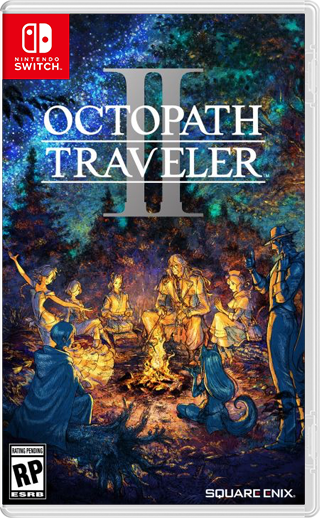
System: Nintendo Switch
Release Date: February 24, 2023
Categories: RPG
Publisher: Square Enix
Developer: Square Enix


